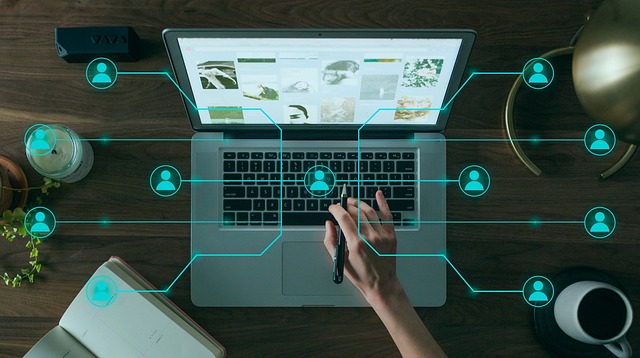AI-driven digital twin building models are revolutionizing commercial real estate (CRE) asset management by creating virtual replicas integrating sensor data, tenant info, and history for comprehensive performance insights. These tools predict maintenance needs, optimize space utilization, and anticipate tenant behavior through advanced AI tenant risk analysis, enabling proactive issue resolution, cost reduction, and enhanced property value maximization. By leveraging machine learning algorithms to analyze historical occupancy rates, tenant financial health, and market trends, AI tenant risk analysis tools provide predictive insights on tenant turnover, default risks, and economic shifts' impact on rental income, empowering stakeholders to make informed leasing decisions and optimize portfolios for stable, profitable investments.
“The future of commercial real estate (CRE) is here with the advent of AI-powered digital twin building models. This innovative technology offers a revolutionary approach to understanding and managing properties, especially in risk assessment. The article explores how these digital twins can enhance decision-making processes, providing an in-depth look at their capabilities.
We delve into the specific role of AI tenant risk analysis tools, which are set to transform CRE industry dynamics. By examining benefits and potential implications, we uncover a new era where data-driven insights drive successful investments.”
- Understanding AI-Powered Digital Twins in Commercial Real Estate
- The Role of AI Tenant Risk Analysis Tools
- Benefits and Future Implications for the Industry
Understanding AI-Powered Digital Twins in Commercial Real Estate

In the realm of commercial real estate, AI-powered digital twin building models are revolutionizing how we understand and manage properties. These advanced tools create virtual replicas of physical spaces, offering a comprehensive view of a building’s performance, layout, and potential issues. By integrating data from various sources, including sensor feeds, tenant information, and historical records, AI tenant risk analysis tools can predict maintenance needs, optimize space utilization, and even anticipate tenant behavior.
The concept behind digital twins is to provide a dynamic, real-time representation of a building’s state. This allows for more accurate planning, improved decision-making, and enhanced tenant experiences. With AI at the core, these models can analyze patterns, identify trends, and provide insights that were previously difficult to attain. As a result, property managers can proactively address issues, reduce operational costs, and maximize the value of their assets.
The Role of AI Tenant Risk Analysis Tools

AI tenant risk analysis tools are transforming the way commercial real estate (CRE) professionals assess and mitigate risks associated with leasing decisions. These advanced technologies leverage machine learning algorithms to analyze vast datasets, including historical occupancy rates, tenant financial health, and market trends, providing insights that go beyond traditional methods. By modeling potential scenarios and identifying red flags early on, these tools empower investors and property managers to make more informed choices.
They can predict tenant turnover, default risks, and even the impact of economic shifts on rental income. This proactive approach allows for better-informed leasing strategies, portfolio optimization, and ultimately, improved investment performance. With AI tenant risk analysis, CRE stakeholders can navigate complex landscapes with increased confidence, ensuring their assets remain stable and profitable investments.
Benefits and Future Implications for the Industry

The integration of AI in commercial real estate (CRE) through digital twin building models offers a myriad of benefits, transforming how professionals approach property management and investment. These advanced simulations provide a holistic view of buildings, enabling data-driven decisions. With AI tenant risk analysis tools incorporated into these models, CRE stakeholders can gain valuable insights into potential risks and opportunities associated with tenants, enhancing their ability to mitigate issues.
Looking ahead, the industry stands on the brink of a significant shift towards predictive analytics, automated processes, and enhanced visualisations. As AI technology matures, digital twins will likely become standard, revolutionising how we perceive and interact with built environments. This evolution promises improved space optimisation, cost savings, and enhanced tenant experiences, ultimately reshaping the CRE landscape.
AI digital twin building models are transforming commercial real estate, offering enhanced insights through AI tenant risk analysis tools. By simulating various scenarios, these technologies enable more informed decision-making, risk mitigation, and strategic planning. As the industry evolves, AI-powered digital twins will play a pivotal role in optimizing portfolio management, improving tenant experiences, and driving sustainable growth. Embracing these innovations ensures commercial real estate remains agile and competitive in the future.
